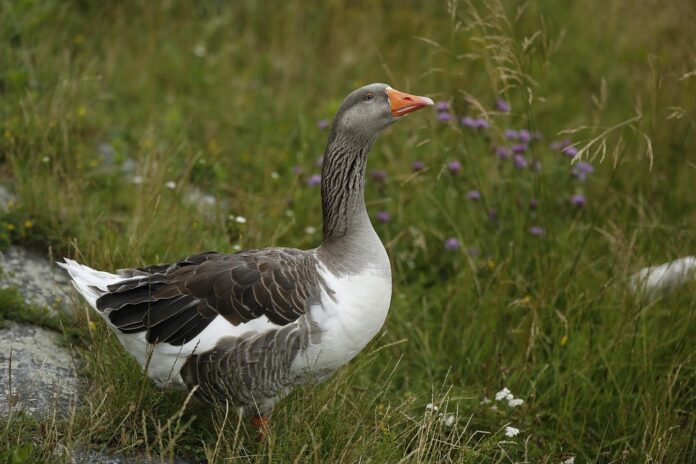Introduction
Climate change is a pressing issue that affects various industries across the globe, including poultry production. As temperatures rise and weather patterns become more erratic, the poultry industry faces numerous challenges that can impact production, quality, and overall sustainability. In this report, we will explore the top 10 climate change impacts on poultry production, including specific data, financials, volumes, and examples to provide a comprehensive understanding of the issue.
Rising Temperatures
One of the most significant impacts of climate change on poultry production is rising temperatures. As global temperatures increase, poultry farms may experience heat stress in birds, leading to reduced feed intake, lower egg production, and increased mortality rates. According to a study by the Food and Agriculture Organization (FAO), for every 1°C increase in temperature, poultry production can decrease by 3-5%.
Erratic Weather Patterns
Climate change is also causing more frequent and severe weather events, such as hurricanes, floods, and droughts. These extreme weather patterns can disrupt poultry production by damaging infrastructure, reducing feed availability, and increasing the risk of disease outbreaks. For example, a poultry farm in the path of a hurricane may suffer significant losses due to damage to facilities and loss of birds.
Water Scarcity
Another impact of climate change on poultry production is water scarcity. As droughts become more common in certain regions, poultry farms may struggle to access an adequate water supply for drinking, cooling, and sanitation. This can lead to decreased bird welfare, increased stress, and lower productivity. According to the FAO, water scarcity is projected to reduce poultry production by 8-12% by 2050.
Feed Availability
Climate change can also affect feed availability for poultry production. Rising temperatures and droughts can reduce crop yields and increase feed prices, making it more challenging for poultry farmers to access affordable and nutritious feed ingredients. This can impact bird growth, egg production, and overall profitability. For example, a poultry farm may need to source alternative feed sources or adjust their feeding strategies to cope with changing conditions.
Disease Outbreaks
Climate change can create favorable conditions for the spread of diseases in poultry farms. Higher temperatures and humidity levels can increase the prevalence of pathogens, such as avian influenza and Newcastle disease, leading to disease outbreaks that can devastate poultry populations. Disease outbreaks can result in significant financial losses for poultry farmers and pose a risk to public health. For instance, a poultry farm may need to implement biosecurity measures and vaccination programs to prevent disease outbreaks and protect their birds.
Energy Costs
Poultry production is energy-intensive, requiring electricity for lighting, heating, ventilation, and cooling systems. Climate change can impact energy costs for poultry farms, as extreme temperatures may require increased use of heating or cooling systems to maintain optimal conditions for bird welfare and productivity. Rising energy costs can strain the profitability of poultry farms, especially smaller operations with limited resources. For example, a poultry farm may need to invest in energy-efficient equipment or renewable energy sources to reduce their carbon footprint and lower operating costs.
Regulatory Changes
As the impacts of climate change become more evident, policymakers and regulators are implementing stricter environmental regulations to mitigate greenhouse gas emissions and promote sustainable practices in the poultry industry. These regulatory changes can affect poultry production by requiring farms to reduce their carbon footprint, manage waste more effectively, and adopt environmentally friendly practices. For example, a poultry farm may need to invest in waste treatment systems or alternative energy sources to comply with new regulations and maintain their operations.
Supply Chain Disruptions
Climate change can also disrupt the supply chain for poultry production, as extreme weather events and natural disasters can affect the transportation of feed, chicks, and other essential inputs to poultry farms. Supply chain disruptions can lead to delays, shortages, and increased costs for poultry farmers, impacting their ability to meet market demand and maintain consistent production levels. For instance, a poultry farm may experience delays in receiving feed deliveries due to a hurricane or flooding, leading to feed shortages and potential losses in bird performance.
Consumer Demand
Consumer demand for sustainable and ethically produced poultry products is increasing, driven by concerns about climate change, animal welfare, and food safety. Poultry farmers are under pressure to meet consumer expectations for environmentally friendly practices, such as reducing carbon emissions, using cage-free housing systems, and sourcing feed from sustainable sources. Meeting consumer demand for sustainable poultry products can require investments in infrastructure, technology, and certifications to differentiate products in the market and maintain consumer trust. For example, a poultry farm may need to implement organic farming practices or invest in renewable energy to appeal to environmentally conscious consumers.
Adaptation Strategies
In response to the impacts of climate change on poultry production, farmers can implement adaptation strategies to mitigate risks, improve resilience, and ensure the long-term sustainability of their operations. These strategies may include investing in climate-smart technologies, diversifying feed sources, improving water management, enhancing biosecurity measures, and collaborating with stakeholders to address shared challenges. By proactively adapting to the changing climate, poultry farmers can minimize losses, enhance productivity, and contribute to a more sustainable food system.
Conclusion
Climate change has profound implications for poultry production, affecting various aspects of the industry from temperature regulation and feed availability to disease control and consumer demand. By understanding the top 10 climate change impacts on poultry production and implementing adaptation strategies, farmers can navigate these challenges, optimize production efficiency, and contribute to a more resilient and sustainable poultry industry in the face of a changing climate.
[Read More: Global Poultry Industry Report 2025: Trends, Challenges, and Future Outlook Across the Value Chain]




